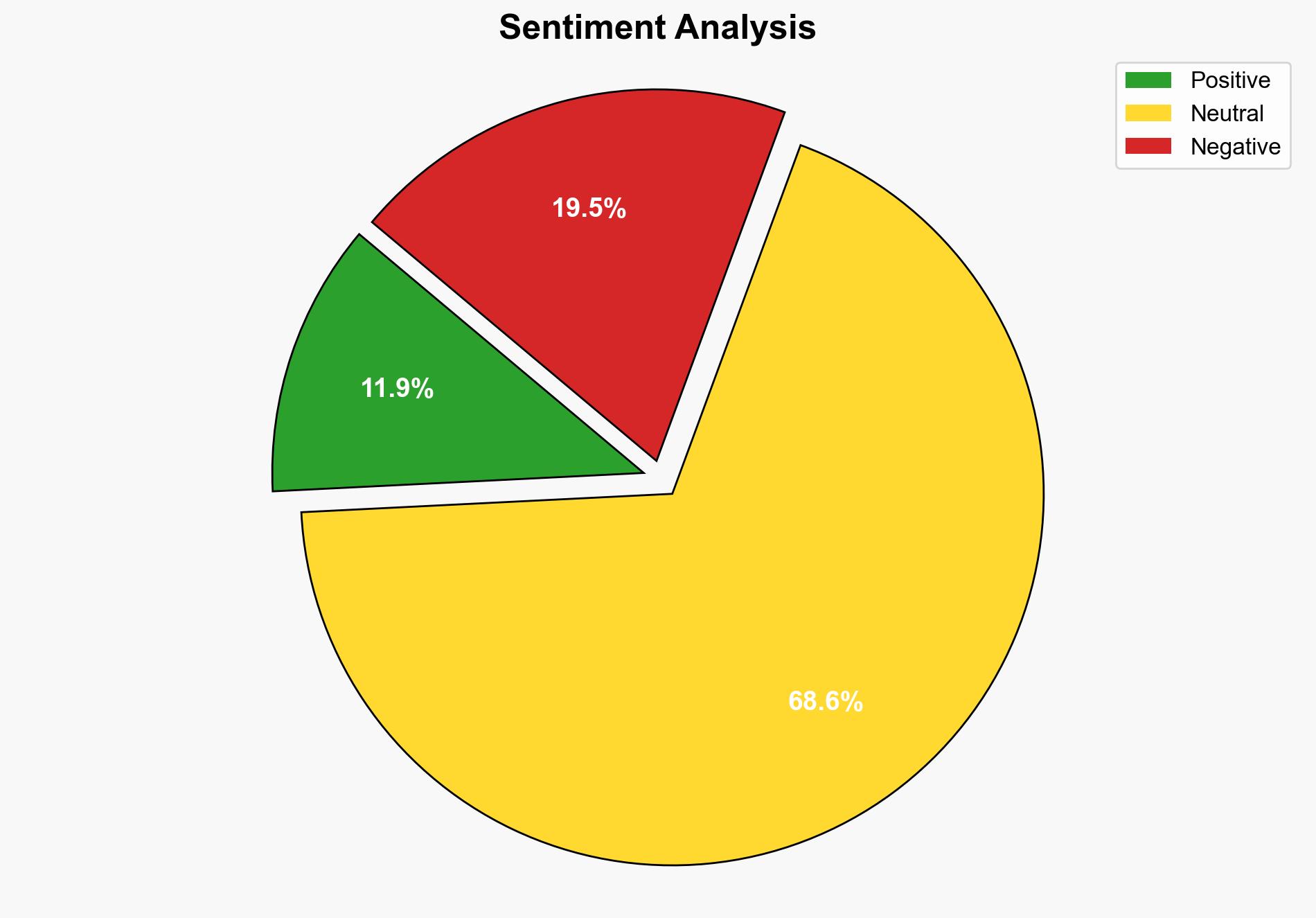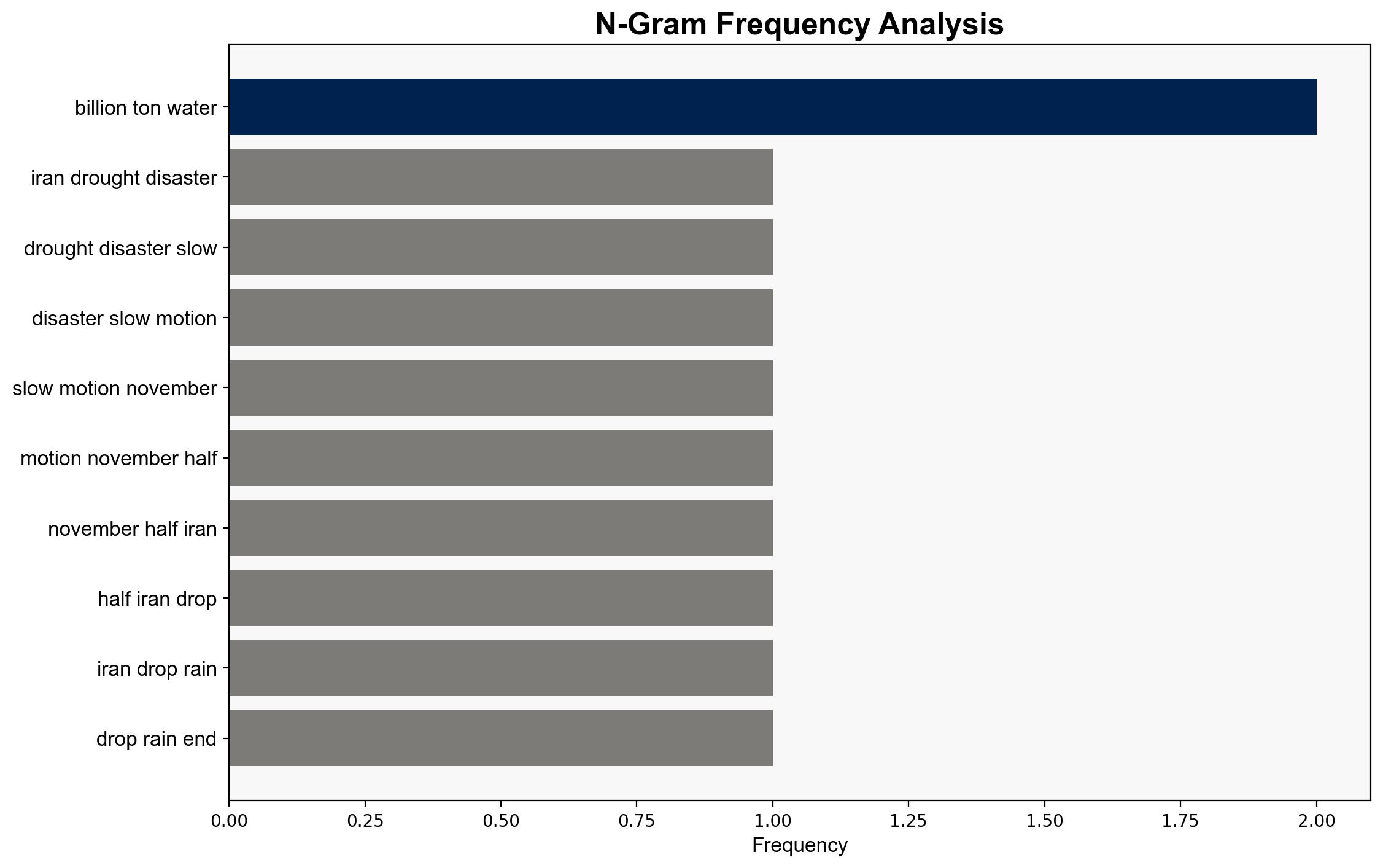Iran’s drought A disaster in slow motion – DW (English)
Published on: 2025-11-11
AI-powered OSINT brief from verified open sources. Automated NLP signal extraction with human verification. See our Methodology and Why WorldWideWatchers.
Intelligence Report: Iran’s drought A disaster in slow motion – DW (English)
1. BLUF (Bottom Line Up Front)
The most supported hypothesis is that Iran’s current water crisis is primarily due to systemic mismanagement and outdated infrastructure, compounded by climate change. The confidence level in this assessment is moderate, given the complexity of factors involved. Recommended actions include prioritizing infrastructure modernization and implementing sustainable water management practices.
2. Competing Hypotheses
Hypothesis 1: The drought in Iran is primarily a result of climate change, with extreme heat and reduced precipitation exacerbating pre-existing water supply issues.
Hypothesis 2: The drought is largely due to systemic mismanagement, including inefficient irrigation practices, outdated infrastructure, and poor governance, which have been unable to adapt to changing environmental conditions.
Hypothesis 2 is more likely, as evidence points to long-standing issues in water management and infrastructure, which have been highlighted by environmental researchers and exacerbated by climate conditions.
3. Key Assumptions and Red Flags
Assumptions: It is assumed that official data on precipitation and water levels are accurate and that reported infrastructure issues are as severe as described.
Red Flags: Potential bias in official statements that may downplay the role of governance issues. The possibility of data manipulation to avoid political accountability.
4. Implications and Strategic Risks
The water crisis poses significant risks, including potential social unrest due to water rationing and restrictions, economic impacts on agriculture, and strain on urban infrastructure. Politically, the crisis could lead to increased public dissatisfaction with the government, potentially destabilizing the regime. Regionally, water scarcity could exacerbate tensions with neighboring countries over shared water resources.
5. Recommendations and Outlook
- Actionable Steps: Invest in modernizing water infrastructure, prioritize efficient irrigation techniques, and develop comprehensive water management policies. Engage with international partners for technical assistance and knowledge transfer.
- Best Scenario: Successful implementation of sustainable water management practices leads to stabilization of water supply and reduction in social tensions.
- Worst Scenario: Continued mismanagement and environmental degradation lead to severe water shortages, widespread unrest, and potential regional conflict over water resources.
- Most-likely Scenario: Incremental improvements in water management occur, but significant challenges remain due to entrenched governance issues and climate variability.
6. Key Individuals and Entities
Abbas Ali Abad (Energy Minister), Azam Bahrami (Environmental Researcher), Mohammad Javad Tourian (Researcher, Stuttgart University), Masoud Pezeshkian (President, mentioned in context of criticism).
7. Thematic Tags
Middle East, Climate Change, Water Management, Infrastructure, Governance, Iran
Structured Analytic Techniques Applied
- Causal Layered Analysis (CLA): Analyze events across surface happenings, systems, worldviews, and myths.
- Cross-Impact Simulation: Model ripple effects across neighboring states, conflicts, or economic dependencies.
- Scenario Generation: Explore divergent futures under varying assumptions to identify plausible paths.
Explore more:
Regional Focus Briefs ·
Daily Summary ·
Methodology





